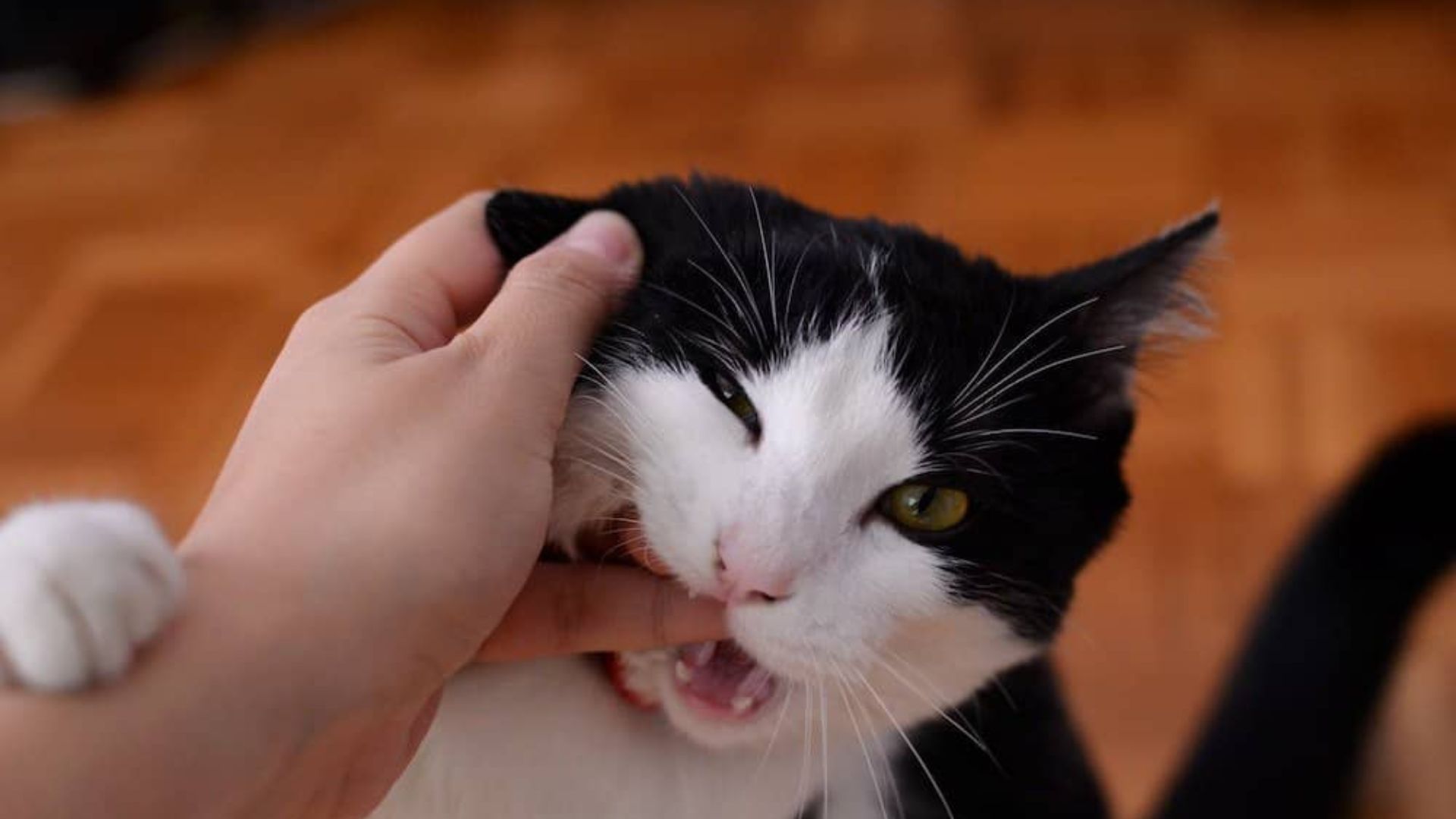
Why do cats bite ?
Why do cats bite ? Cats bite for various reasons, including love bites, fear, anxiety, petting and biting, frustration, inappropriate play, social pressures, illness, or pain. Love bites are gentle nibbles and “love bites” that cats use to express affection.
Fear and anxiety can cause cats to bite as a defensive mechanism. Petting and biting is a behaviour where cats become conflicted between being petted and keeping their guard up, leading to biting. Frustration can cause cats to bite when their attempts to communicate are not understood or acted upon.
Inappropriate play can lead to biting if cats are encouraged to play with fingers or toes. Social pressures, such as introducing a new cat into their territory without proper introduction, can also cause aggressive behaviour, such as biting.
Illness or pain can also cause cats to bite as a sign of discomfort. It is important to address the underlying cause of the biting behaviour and seek help from a veterinarian or certified cat behaviour consultant if necessary.
How to train a cat to not bite
Cats bite for various reasons, including play, attention-seeking, fear, and pain. To train a cat not to bite, it is important to understand the underlying cause of the behaviour. Here are some steps to take:
1. Redirect biting: Provide your cat with appropriate toys to redirect their biting behaviour.
2. Engage your cat: Participate in daily playtime with your cat using wand toys that mimic prey and satisfy their need to bite.
3. Understand and respect your cat’s touch preferences: Learn what your cat enjoys and honour their boundaries. Pay attention to how your cat reacts when you touch certain places and stop petting before noticing signs of reactivity.
4. Listen to your cat’s body language: Pay attention to signals that mean your cat wants to be left alone or is reaching their limit.
5. Give your cat choices and seek their consent: Offer your cat the freedom to choose their activities and leave a situation.
6. Socialise your cat: If your cat is fearful, socialise them with people and other animals to help them feel more comfortable.
7. Provide positive reinforcement: Reward your cat for good behaviour, such as remaining calm and not biting.
8. Avoid punishment: Punishing your cat for biting is ineffective and can lead to fear-induced reactivity.
9. Address any underlying health issues: If your cat is biting due to pain or illness, address the underlying issue.
10. Be patient: Training a cat not to bite takes time and patience.
By following these steps, you can help your cat learn to express their emotions in a more appropriate way and reduce the likelihood of biting.
Toys that can help train a cat not to bite
Toys that can help train a cat not to bite include:
1. Wand Toys: Wand toys are especially effective for interactive play with cats. They allow you to control the toy from afar, without putting your hands within biting distance, and mimic the movement of prey, which is irresistible to cats.
2. Kick Toys: Kick toys can be given to cats to allow them to release their biting and bunny-kicking instincts during playtime.
3. Throw Toys: Throw toys are useful for keeping body parts away from a cat’s mouth during play. Long toys like cigars or body pillows work well for this purpose.
Using these toys during playtime can help redirect a cat’s biting behaviour away from human hands and feet, teaching them to play without nipping or biting.
How to identify if a cat is biting out of aggression or play
To identify if a cat is biting out of aggression or play, it is important to observe the cat’s behaviour and body language. If the cat is showing signs of aggression, such as dilated pupils, flattened ears, a tense posture, or vocalisations like growls or hissing, then the biting is likely due to aggression.
On the other hand, if the cat is engaging in playful behaviour, such as chasing, pouncing, or biting with inhibited force that does not break the skin, then the biting is likely due to play.
It is also important to consider the context in which the biting occurs. If the biting occurs during play, then it is likely due to play. However, if the biting occurs during interactions with people or other animals, then it is more likely due to aggression.
If the biting is due to aggression, it is important to identify the underlying cause of the aggression, which could be due to fear, territoriality, pain, or other factors.
Once the underlying cause is identified, appropriate steps can be taken to address the aggression, such as providing a safe and secure environment, managing interactions with people and other animals, and addressing any underlying medical conditions.
If the biting is due to play, it is important to provide appropriate outlets for the cat’s play behaviour, such as interactive toys, play sessions with people, and other forms of enrichment. It is also important to avoid encouraging rough play or play that involves biting or scratching, as this can reinforce aggressive behaviour.
In general, it is important to approach a cat that is biting with caution and to avoid punishing or scolding the cat, as this can increase the likelihood of aggressive behaviour. Instead, it is important to address the underlying cause of the biting and to provide appropriate outlets for the cat’s behaviour.
Continue reading: How to get rid of cat pee smell


